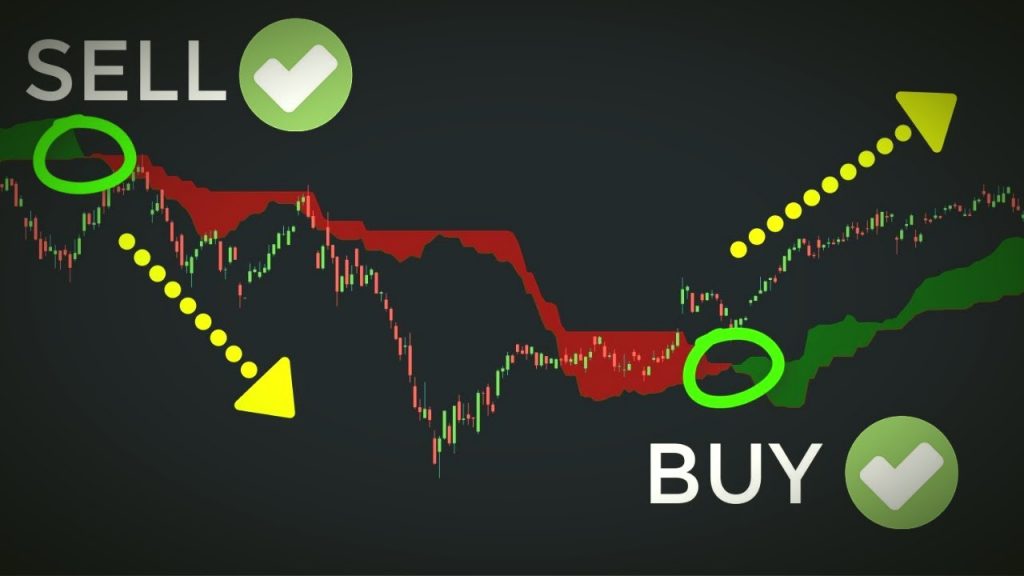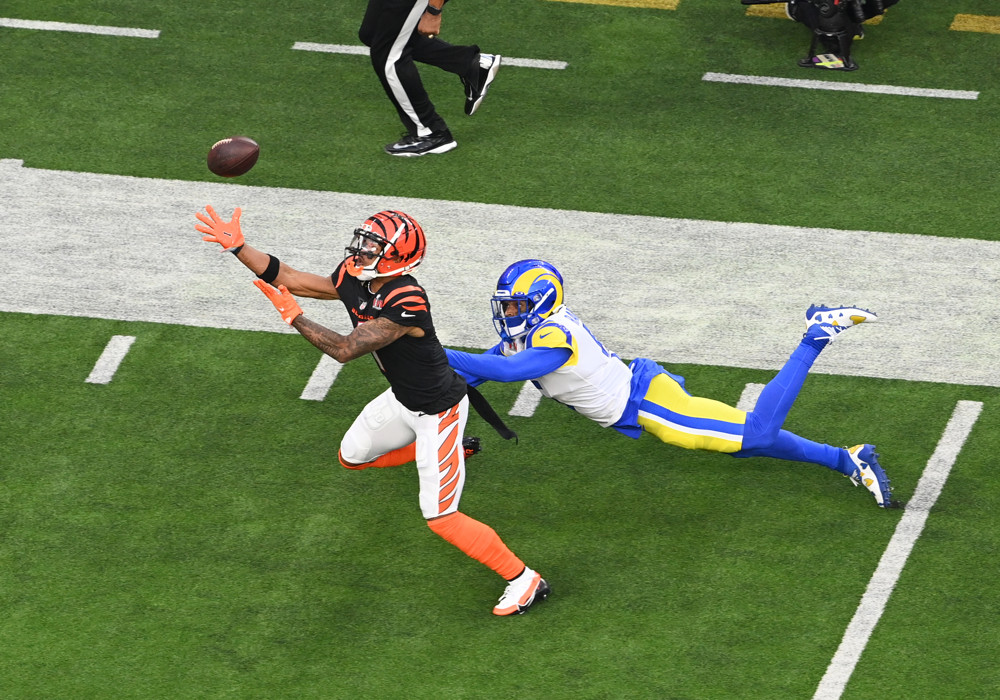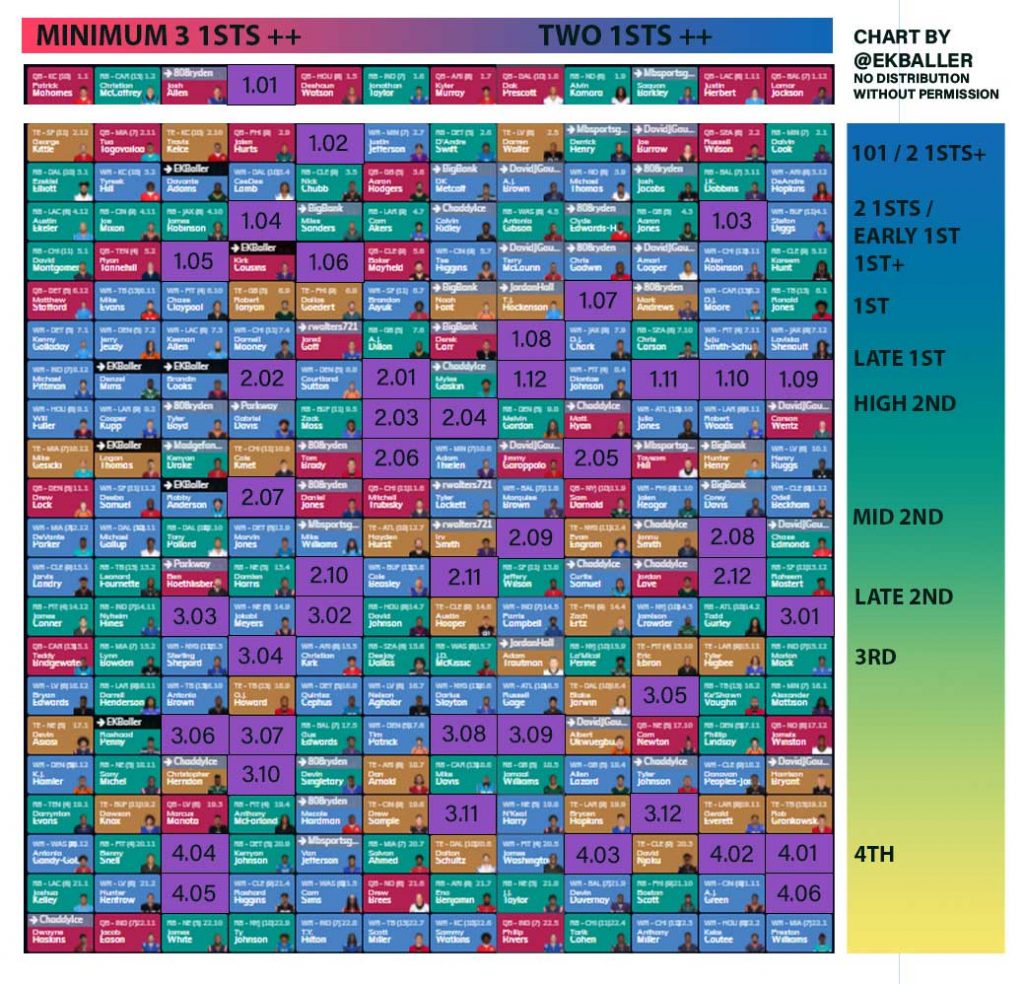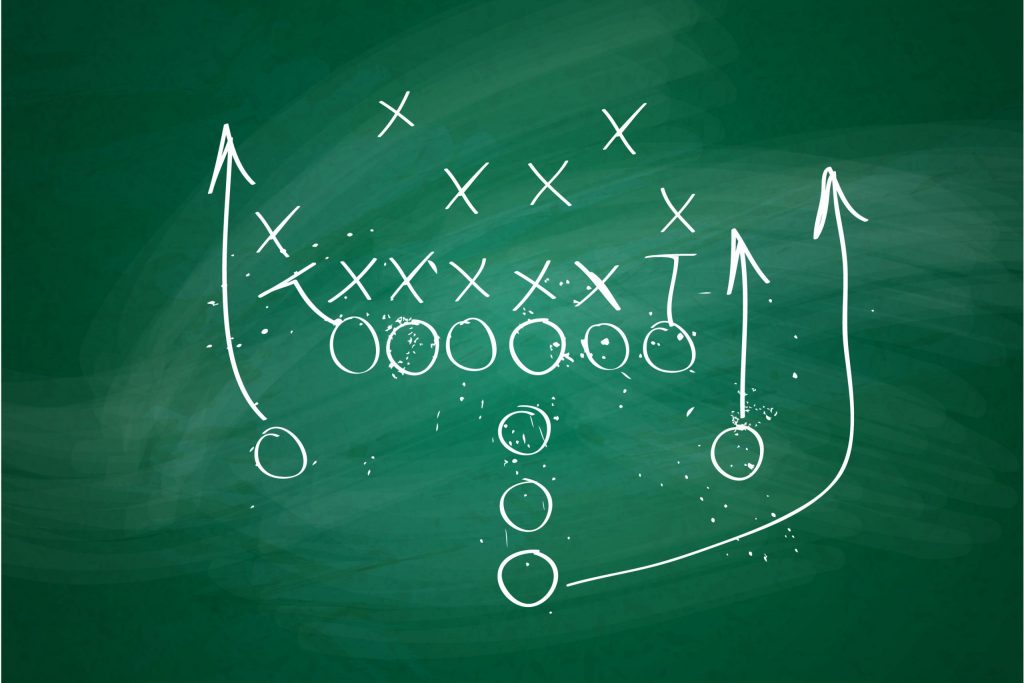So you’ve decided that dynasty looks fun. You’re in. Where do you start?
One option is to hop into a new league that’s just starting up or even start your own. We’re going to consider both of these options, and then take a good look at the startup draft to prep you for success.
A second option- picking up an orphan- we’ll talk about a little later in this series.
If you’re not quite there yet- maybe you have some basic questions, or don’t really know what dynasty fantasy football is all about- check out Intro to Dynasty Vol 1, where I covered those topics.
Finding a Startup To Join
There are a lot of great places to find a dynasty league startup. I sketched through some in Vol I, but we’ll go a little further here, and I’ll give you links.
- Twitter. @ me (@EKBaller) and I’ll tag you with a bunch of people. We’ll get you into a league with people from the community.
- It’s free
- You’ll network and meet other players
- All types of leagues & players
- Lots of good people but it’s on you to vet the leagues
- Reddit League Classifieds
- It’s free
- You’ll network and meet other players
- All types of leagues & players
- It’s on you to vet the leagues
- Leaguesafe League Classifieds
- It’s free
- Run by reputable guys
- Leagues will generally be run on Leaguesafe, reducing the chance of fraud (leaguesafe does charge a fee)
- Safeleagues
- Run by reputable guys (Scott Fish & Ryan McDowell)
- Safeleagues charges a fee
- Leagues will generally be run on Leaguesafe (Leaguesafe does charge a fee)
There are some other great services that come recommended as well, such as Master’s Fantasy, FFPC, Apex Leagues. Honestly, when I posted this on Twitter, there were far too many responses to link them all. Here’s the thread. Check it out if you want more options.
The first leagues I picked up were off Reddit, and that worked fine for me. I landed in with some good people.
I also ran into some cautionary tales. One league I encountered had all responded to a classifieds ad and joined a league. They Venmo’d the commishioner… and never heard from him again. So…
Use a Treasurer Service!

Graphic
Leaguesafe has a very low cost, it keeps the finances organized and visible, and it helps protect you from fraud.
Fantrax Treasurer is another good option that accomplishes the same purpose, although I believe that it’s only available for Fantrax leagues.
What Kind of League Should I Join?
Well, what kind of league do you want to play in? Is superflex your speed? Want the added wrinkle of TE-premium? How about adding a few IDP players- or a whole defense? Do you want a bigger league- 14 teams- or a small one, with only 10? How about an auction league?
If you don’t know what some of these terms mean, check out Intro To Dynasty: Vol 1, where I included a mini-glossary to explain the jargon.
All of these options are good options. Trying new things is awesome. Just: know your league settings. In SF, the elite QBs are drafted with the elite RBs. In TEP, TEs like Kittle and Kelce move up with the top-tiers WRs. QBs get very scarce in big SF leagues, but in ten-teamers they don’t have quite the same value.
In an auction, you won’t have a traditional snake draft; instead you’ll all bid on players, giving you a shot to land any player combination you choose. Want to build your team around CMC & Michael Thomas? Pay up, and fill those other roster spots with low-cost scrubs.
League Culture
cul·ture/ˈkəlCHər /Learn to pronounce noun
2. the customs, arts, social institutions, and achievements of a particular nation, people, or other social group.
https://www.lexico.com/en/definition/culture
Far more important than a league’s settings is it’s culture. Who’s in the league? What are they like? Are these people you want to hang out with for, oh, the next decade or so?
Hop in the chat room before you start sending out payments for dues and see if it’s a league you want to belong to.
In the league where everyone got burnt, from my earlier story, the chat was nothing but rancor about the guy that had taken conned them. They were angry- and justifiably so- but it quickly became clear that that league wasn’t going to be much fun.
The final straw was when they set the draft order and me & my other friend that had just joined were at the 11 & 12 spots. When I asked the commissioner if he’d randomized the order, he said “the guys that got burnt deserved a leg up.”
Needless to say, I was out of there, post-haste.
Even in instances that aren’t that extreme, there’s some leagues with owners that are just not very active. They can be fine, but they’re not as fun, and less chatter might indicate less activity, fewer trades, etc. A lively group makes for a league that you’ll want to stay in, and it makes for a league that lasts.
Here’s what some of my fellow players had to say when I posed the question of league culture to them:
Yes. I'm in some leagues that are lame and have almost no movement, conversation or interaction. Blows. Don't stress those leagues is my advice. Find or build a new one w the right culture and the right people
— Jordan Gabriel(@50shadesofdrunk) February 18, 2020
Def. Matters. Respect, some good ole competitive trash talk, setting lineup and being active in chat/trades/waivers pic.twitter.com/HSECgncIUc
— Cassidy Ace (@cassidyace89) February 18, 2020
Yes… responding to trade offers is top of the list. I love a league that is so competitive that their is a little bad blood between a player or two.
— Brody Israelson (@BrodyIsraelson) February 18, 2020
All respondents agreed on one point: the right managers make a good league.
A Word of Advice
Before you join a startup, make sure you have some good resources to understand player values. Even if it’s a decent bunch, you’re probably going to get some trade offers you should snap reject. It’s probably a good idea not to make any trades your first few weeks. Relax, watch things unfold, and get a better idea of how the league plays before you start launching offers out there.

We’ll get into the concept of trade values in a later part of this series, but, for now, get some people you trust to help you with evaluation. The chart later in this article should help, as do trade calculators, but don’t rely too much on any one tool.
The FF Twitter community is a huge resource for learning values. @me and I’ll RT your trade / value questions & tag a ton of smart people for you; there’s other FF accounts that really focus on trades and retweeting trades, so seek some of them out as well.
At the very worst, you’ll get an idea of what other people think of the values; they might not always be right, but having an idea of the popular consensus is helpful.
Starting Up a Startup
Maybe you have a good group of guys you like playing with and you’ve finally talked them into a dynasty league. Instead of joining a startup, you’re launching one.
Hopefully, you have a bit of experience as a commissioner already. Whole books could be written just about that. But here are some thoughts from other players on starting up your first dynasty league as commish:
Treat it as a democracy. Energy major decision should be voted on
@dynastyRich
Dear future start up commissioner: have a solid set of rules in a document ready to share with future team owners
@ffspotlight
Listen to @CommishPod before starting and write your bylaws before you get people. If you are going to commish a league make it one you want to commish.
@Daniel K
Him: be open to everyone’s opinions. The point is to enjoy it. Unless its some SOB complaining about superflex [editor’s note. – he’s talking about me]
@him_hersports
Really, this thread was rife with great advice, so please check it out.
My biggest suggestion was also the most common suggestion in the thread: have a league constitution that deals with the major questions you’ll face.
Here are some common issues you’ll want to address:
- How are playoffs seeded? Are there divisions? Does seeding go by points or by record?
- How is the rookie draft order determined? By record, points max points, or some combination thereof?
- Is tanking for draft picks ok? If not, what constitutes tanking, and what do you do about it?
- (Ed. Note: there’s savvier ways of eliminating the issue than being the arbiter of other player’s lineup decisions. Try using max PF for draft order, or awarding extra picks to the winner of the toilet bracket)
- (Ed. Note: there’s savvier ways of eliminating the issue than being the arbiter of other player’s lineup decisions. Try using max PF for draft order, or awarding extra picks to the winner of the toilet bracket)
- Are there reviews or vetos on trades? What do you do if a trade goes through that league members deem unfair? Are there specific types of trades that are not ok?
- What constitutes collusion? What do you do in a situation deemed collusion?
- When are league fees due? Do managers have to buy in a year ahead? Is this affected by trading future picks?
- How do you handle unpaid dues?
Trust me, you don’t want to wing this stuff! It will lead to nothing good. Get the doc in place.
The easiest solution for all this is to take someone else’s constitution, copy it, and edit it to meet the needs of your league.
On that note: Here you go!
Here is the constitution for the DHH / DynastyNerds writer’s league, as prepared by @thesofacout. Thanks Jeff!
Here’s another constitution, this one for an auction league. Thanks, Justin Peek!
Another great idea is to listen to Scott Fish and Ryan McDowell’s pod, Commission: Impossible. Here’s their Twitter handle. They’re very helpful, and generally willing to answer questions.
Which Platforms Are Best?
Here are some of the responses I got when I kicked this question to the community:
Flea Flicker. It’s free, and easily customizable (for most types of leagues). MFL is second, not free, takes a minute to navigate but once you learn it, it’s great to use.
Jonathan Smith
@MyFantasyLeague and isnt close for me. Have used them for over a decade and nothing but class. On spot support, listening and adjusting site as the industry continues to grow thru listening to the people that play and not the masses. Nothing but class
Oklahomie Doug
I can’t say it’s my favorite, because it’s super basic in many respects, but for my favorite TYPES of leagues (Campus 2 Canton types), nothing beats @Fantrax because they offer active college FF leagues and players. It’s not sexy, and it has its flaws, but it’s fine really.
Brian Shacochis
Mike Dimatteo
Sleeper. Super easy to use and it’s very intuitive. The only platform I have interest in using going forward
You get double points every time a unicorn farts a rainbow. If you wanted to, you could make that a scoring option on MFL. We use it for all our dynasty leagues.
Rich Dotson
You can see there is literally no consensus on this!
Sleeper, MFL, Fantrax, FleaFlicker, Yahoo… They all have advantages and disadvantages.
For most people, I’d recommend Sleeper for a first league. It’s a clean and simple interface with enough flexibility to meet the needs of most. They’re good with support and are continually adding features, including auction leagues coming for 2021./
I have leagues in Fleaflicker as well; all the same things apply there, but there’s ads. My only other knock on Fleaflicker is that you can’t draft on the app.
If you want to dip into Campus-to-Canton or devy, you’ll have to look at Yahoo or Fantrax, as they are the only two platforms that currently support college league setups. Otherwise, you need to keep a spreadsheet with placeholder players, which is feasible but a little more work.
If want more customization, MFL might be the best option; many insist it’s simply the best option anyway. If you do use MFL, the Platinum app makes it quite a bit more user-friendly, but that’s only useful for in-season management, all drafts are email / web app based.
Scoring & Roster Settings
This could be a book of its own, so we’re not going to get bogged down too much here. We talked about a lot of different scoring settings earlier. PPR is generally the default. SF and / TEP / tiered PPR are becoming quite common.
The other current trend is to offer multiple flexes (3-5), which rewards depth and a balanced roster more so than just drafting the one lotto ticket stud that drags you to the championship. Other interesting options are to add a second TE spot or a few IDP players instead of a team defense.
Few new leagues require any kickers or defenses to be played.
Rosters are generally deep, although how deep is a matter of preference. Some will cap out around 20-25 roster spots, five taxis, and one IR; others will be 30 spots or more plus taxi and multiple IR spots. Varying roster size will change the way the league plays; a SF, 2TE league with 20 spots will have a rich waiver wire, and that will be part of your strategy; a 35 roster spot league will have hardly any waiver action at all, so you’ll need to trade to maintain your team.
Even in a deep league, it’s still worth scouring the UDFA class when they come in. There are always a few gems that don’t go in the rookie draft, like James Robinson this past season or Darius Slayton in 2019.
I asked my Twitter people for their own favorite setups. Here’s what they said:
PPR with expanded starting lineups (3 RB, 5WR, 2 TE). Promotes depth and team building as opposed to superstar chasing.
Sean Garrity
SF, TE Premium with tiered PPR (points based on how far the catch was, .25-2) and start 11-13 starters so you have to prioritize deep teams
MysticWombat
SF/PPR/IDP123 1point bonus for 100 yard passing and rushing games. Money shot
Jordan Rains
16 Teams Half PPR: SF, WR, WR, WR/TE, TE, RB, RB 7 IDPs: DT, DL, EDR, LB, CB, DB, DP K
Nick Mazzetti
What About Taxi Squads?
“Taxi squads” are a concept unique to dynasty, and different leagues handle them in different ways.
The idea is to give you a FF equivalent of a practice squad, a place to park players you draft that might not be immediate contributors but that have developmental promise.
Only rookies can be added to the taxi, though many leagues let you keep a player on taxi for two or even three years. For the most part, once you move a player off of taxi they can never go back on, although some leagues will let you move them on and off so long as they’re still in their first season.
Generally, you have as many taxi spots as you do rounds of the rookie draft, though some leagues have unlimited taxi spots and others choose not to use them at all, adding more roster spots instead or just having a richer waiver wire.
Most leagues lock the taxi at the beginning of the season so that no new players can be added; some will let you add waiver pickups directly to taxi, though I don’t see that frequently.
What’s Next?
So you’ve got your league filled, you’ve got a constitution in place, everyone’s claimed their teams and paid their dues (hopefully for two seasons). What now?
It’s Time to Draft!
How you go about your draft might be determined by the time of year. If it’s before the NFL draft, you might be having a startup draft of veterans followed by a rookie draft to take place after the NFL draft.
Alternatively, you might draft the rookie draft picks during the main startup draft; commonly, kickers are used to represent those picks. I’ll talk a little more about this shortly.
Draft Strategies & Roster Construction
In a dynasty, there are as many ways to win as there are players.
Here’s a poll to prove my point:
In a league that's SF and tight-end premium, what's your preferred way to win?
— EK(@ekballer) February 14, 2020
There are managers that will draft stud RBs and take WRs and QBs in the middle rounds to flesh the roster out.
Some managers will fill out their core with young stud WRs and QBs and then worry about RBs in the rookie drafts.
Still other managers will go to the extreme with best-player-available, drafting 6 or more stud QBs or RBs- wherever they think there will be scarcity- and then build their roster through trades.
Some players load up on the discounted “aging vets,” taking the value on 30+ year old WRs and 35+ year old QBs to build a “win-now” powerhouse. This can be a very viable strategy for taking the league down year 1.
For example, Julio Jones is still on the board in my current startup, and we’re already in the SEVENTH round.

Some like to “punt” the first year with the intention of getting the studs from the next class to push their team over the top.
Don’t even get me started on IDP, that adds hundreds of other viable paths, as do devy or C2C.
There are a million ways to win, so just pick a strategy and go for it.
My first piece of advice is to know your strategy and follow your values: if you are trying to build a young team, don’t draft that 27 year old RB or 30 year old WR. If you’re going for hardcore win-now, don’t take that hyped-up sophomore over a proven vet that’s a few years older. But don’t be so rigid with your strategy that you pass up an obvious value that’s sliding; take what the draft offers you.
And, importantly, know your league’s settings. If you’re in a SF league, punting QB is a viable strategy, but it can certainly backfire. ADP might not reflect the value of QBs in a SF or 2-QB setup; similarly, ADP for TEP will likely not account for the scoring boost, so look for value there.
How Do I Value Startup Picks?
This is one of the most common questions I see, and it’s tough to answer, so I made a tool to help you out.
I made a chart out of a recent startup to help serve as a rough guide to what you can expect in the draft and to the approximate values of players. It was a SF, TEP league, so you’ll see QBs and TEs going higher than you’d expect if you aren’t used to those settings.
Across the top of the chart, I noted the range of the value in picks for the 1st round players.
Along the right, I did the same with the rest of the draftboard. I used gradients to represent the values (that’s how you should think about this, more so than as bright-line tiers).
Note that this draft is full of reaches and full of players falling, so there’s certainly individual picks in each round that are worth more or less than the value I call out. Every league is different and every draft is different, so don’t take my values as gospel; I’m just trying to give you some rough guides to steer the way.
There’s some vets that fell past where they should have; that will always happen, and you should take advantage. Look at where Keenan Allen went, or even Davante Adams.
At the end of the positional runs, someone often panic-drafts a lower-tier player well ahead of their value. For example, check out Kareem Hunt and Ronald Jones in this one- fine backs, but ahead of DJ Moore?
In this draft rookie picks were drafted as though they were players, with the actual rookie draft scheduled for after the NFL draft. Those picks are labeled. You’ll see that some were reaches where they went while others were great values.
The Chart, 2021 Version

Trading Up / Trading Back
Trade to add another stud? Trade back to accumulate more picks?
There are devotees of each. Personally, I don’t often trade up. I do like trading back and acquiring future picks, particularly if I can still get a player from the same tier. Even if you’re dropping a level in player value it’s often well worth it, depending, of course, on the haul.
Similarly, if the cost to move up is reasonable, and there’s a player that’s drastically better than what will otherwise be available, an argument can be made for that as well.
It’s all about the value, and, the reality is, values are all over the place from one league to the next.
Personally, if I’m dropping back a round, I want to add a pick that’s no later than the second round back. So if you want my 4th, I want a 5th and a 7th at the very least. I’d take a 5th and a rookie first, too, though that’s sometimes harder to get. You also need to factor in where in the draft this is (there’s some areas where the value falls off a cliff) and where the picks are within the rounds (in a 14 teamer, moving back a round could be 27 picks or 8 picks, depending on where the other player’s slot is).
Here are some trades from a DynastyNerds/DHH draft:
- Team 1 gave up Year 2020 Draft Pick 8.02; Year 2021 Round 1 Draft Pick from Team 1; Year 2022 Round 1 Draft Pick from Team 1
- Team 2 gave up Year 2020 Draft Pick 2.08
- Team 1 gave up Year 2020 Draft Pick 4.14; Year 2021 Round 2 Draft Pick from Team 1; Year 2022 Round 2 Draft Pick from Team 1
- Team 2 gave up Year 2020 Draft Pick 4.03
- Team 1 gave up Year 2020 Draft Pick 5.11; Year 2022 Round 3 Draft Pick from Team 1
- Team 2 gave up Year 2020 Draft Pick 6.10; Year 2021 Round 2 Draft Pick from Team 2 ; Year 2022 Round 2 Draft Pick from Team 2
- Team 1 gave up Year 2020 Draft Pick 7.03; Year 2021 Round 1 Draft Pick from Team 1
- Team 2 gave up Year 2020 Draft Pick 5.13
This chart can be useful for navigating trade-ups / trade-backs as well, although you’re going to have to apply some common sense (as you should be when using any trade-assist tool) as that will get a little spottier.
Pick the player that corresponds to each spot (who we picked, or who you would pick there).
What do you need to add to make it happen if it was a normal trade? Boom. There’s your cost to move up.
What Do About Drafting the Rookie Picks?
That’s going to depend on your league and your personal preference. Hopefully, the chart will give you an idea of where they might go, but every draft is going to be different.
Generally, when drafting the picks, it’s best to put a player to the number. So if you’re considering the 1.01 in a SF draft, ask yourself, “Do I want [Trevor Lawrence / Najee Harris] in this position, or is there a player I prefer?” You need to have a decent idea of the players available in the rookie pool to do this. I’ll get more into rookie drafts and scouting in the later installments of this series, but there are a ton of resources available to help you with this, not the least our own Dynasty Nerds rankings and film-room.
Often, there’s a better player available, but the allure of the unknown sways us to the rookie picks; accordingly, the rookie picks will sometimes be over drafted. “Rookie hype” is real, so be the guy that uses it to your advantage. Make sure you’re not passing up a locked-in stud for a prospect that might bust.
That’s it for this one. If you have any questions, or if there’s anything I can help with, let me know! I’m @ekballer, hit me up for anything at all.




















